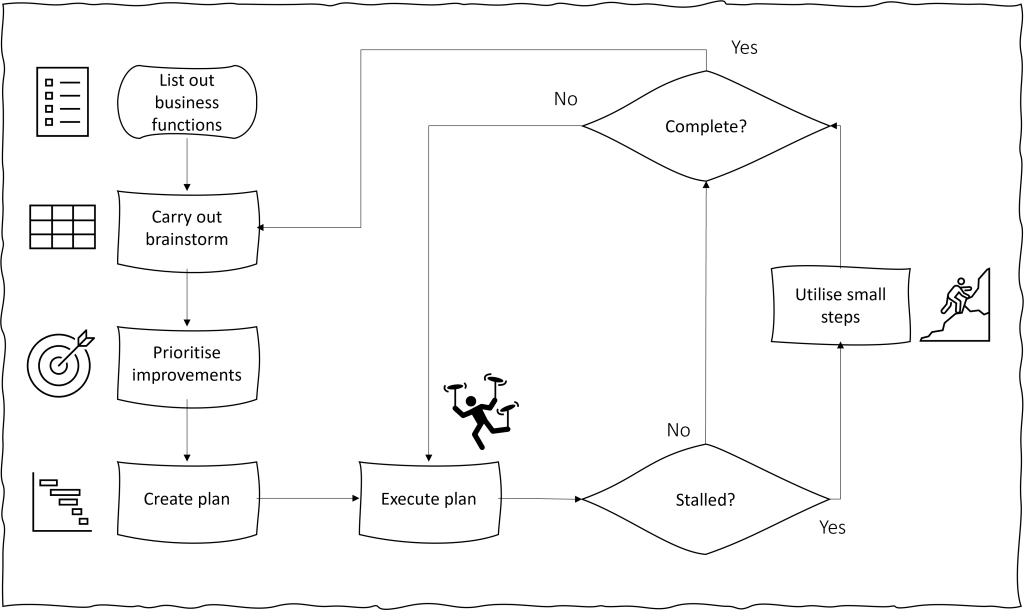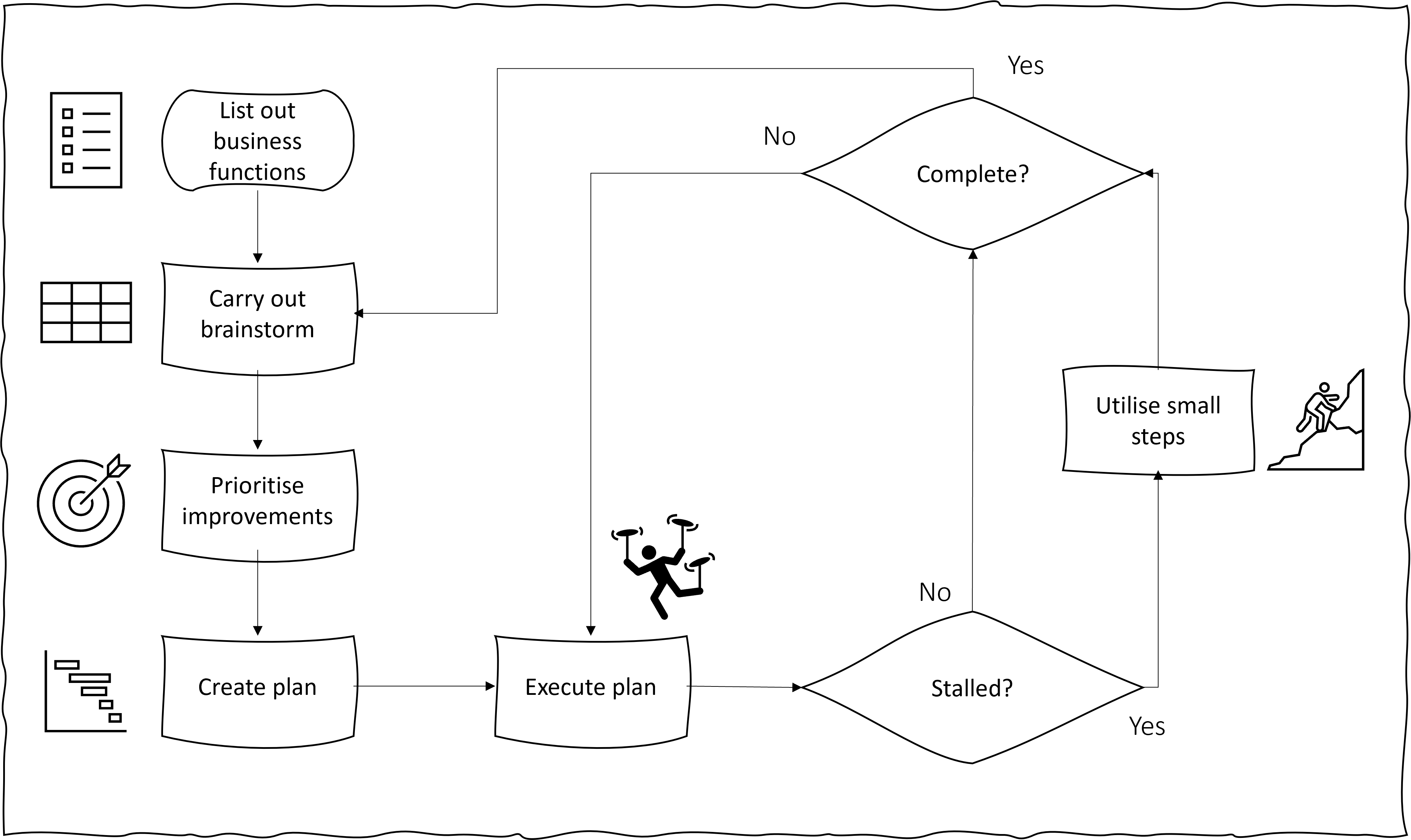Creating an OTIF improvement plan (OTIF = On Time In Full) is daunting to many of us. If you are permanently up against it with your customers, knowing where to start can be a challenge. Plus, if you have a busy day job, starting an improvement plan can be overwhelming.
Focusing on the improvement systems, and your processes, is a good strategy. Focusing on the details of production orders and operations can often create confusion.
In this article, I am going to share with you a simple approach to create an effective plan that can be slotted into your already busy work life.
Start with a high level map
Brainstorming often works best when there is a clear focus. Creating a high level map can provide this focus.
With your team, clarify the main steps through your order fulfilment process. For example:
- Sales order processing
- Scheduling
- Purchasing
- Kitting
- Production
- Sub-contract works
- Quality
- Despatch
It doesn’t have to be any more complex than this. You can include any systems that you utilise also (e.g. CRM / ERP systems).
If you have some specific known problem areas, prioritise these before moving on,

The “More / Less / Start / Stop” Brainstorm
The type of brainstorm I am proposing here has four headings.
- More of…
- Less of…
- Start doing…
- Stop doing…
For each step in your process, brainstorm any decisions / actions that fall into the four categories.
For example, if I took scheduling I could generate options such as:
| More of | Less of | Start doing | Stop doing |
| – Correcting the schedule – Discussing the schedule with the Team Leaders – Learning from schedule failures – Communicating schedule problems with customers early | – Overriding the capacity plan – Hiding kitting problems | – Shop floor data capture – Weekly schedule reviews | – Separate spreadsheet schedules – Cherry picking orders |
Prioritise what is important
Key to any good OTIF improvement plan (or any other improvement plan) is putting the actions into a sequence. I am going to propose that you take a leaf out of the ’80/20′ approach. Look for the handful of actions that will give you the biggest bang for your buck, with the least amount of time, effort and resources.
Re-arrange the actions / sub-projects so that you have a sequence that makes sense to you. It is an improvement plan, so I recommend that you assign responsibilities and expected completion dates. How you do that is up to you (and outside the scope of this article!).
Take small steps if you are overwhelmed
Kaizen offers us a solution here. Most of us have way too much on our plates even before we undertake an OTIF improvement plan. Kaizen isn’t just a Japanese word for continuous improvement. At the heart of this methodology is the idea of small steps.
Small steps often allow us to progress without being freaked out by the challenge. If any of this is resonating with you, using the approach is simple.
Take your first improvement activity and break it down into a series of small steps. Small is subjective, so let’s start with a step that could be completed in fifteen minutes, or less. As you gain momentum, as confidence rises, you can undertake bigger steps. But, to start, small steps is the approach.
The usual experience from using the small steps strategy is one of acceleration. Once some wins are experienced (and a few of your day to day hassles reduce) more effort gets naturally directed to your plan. Progress ramps up and so do the results.
Additional resources
If you are looking for some additional ideas and strategies to help you with your OTIF improvement plan, then check out my OTIF Improvement System. It includes a step by step methodology for systemising your approach to delivering on time.
Also, if you are looking for an online task management system to help you prioritise your improvement plans and control the project, check out PDCA Complete. This tool does way more than prioritise and launch improvement projects and has a free subscription level for a team of up to three people. You can find out more at www.pdcacomplete.com.
Take the first step
I hope this article has given you some ideas to pull together a practical OTIF improvement plan for your business. The key here, as with all improvement plans, is to take the first step.
If you are still feeling overwhelmed by the amount of work you have identified then please embrace the Kaizen approach. Plan out the first tiny step, take the step and worry about the rest of it later on!
